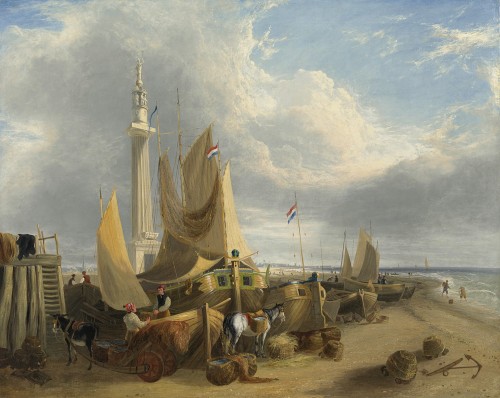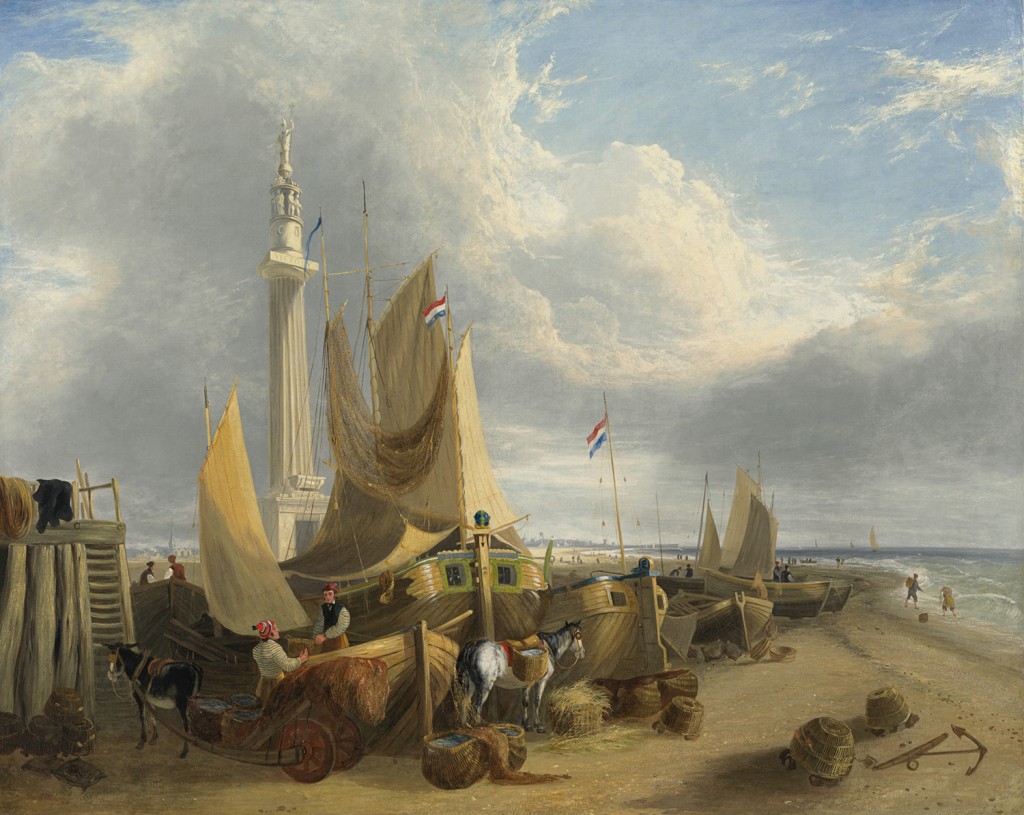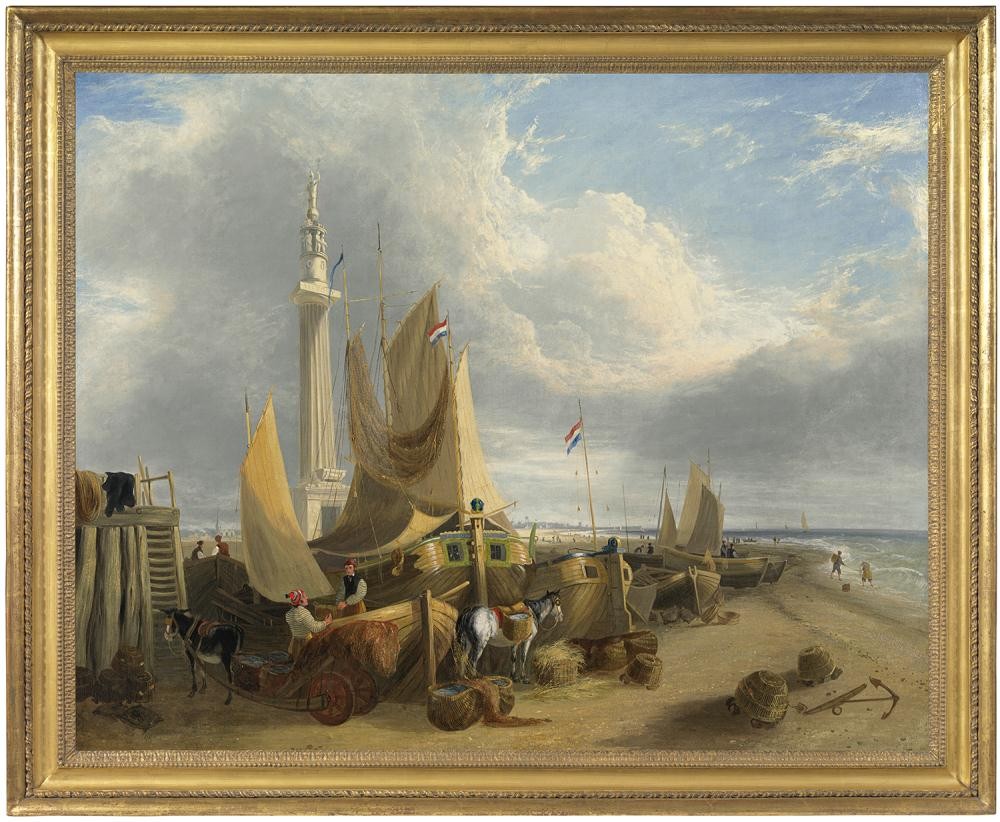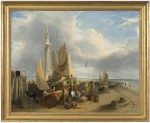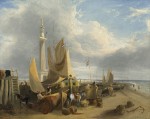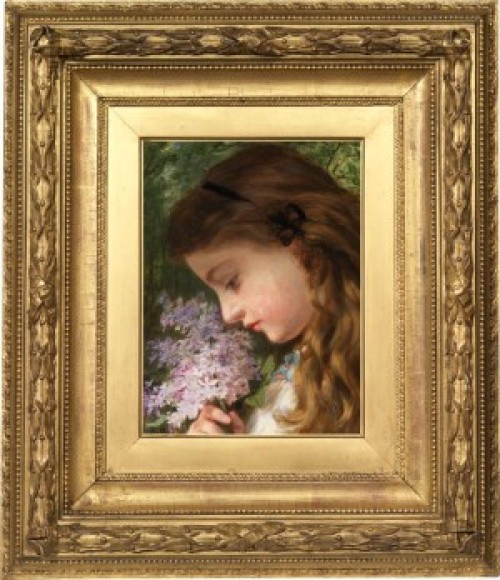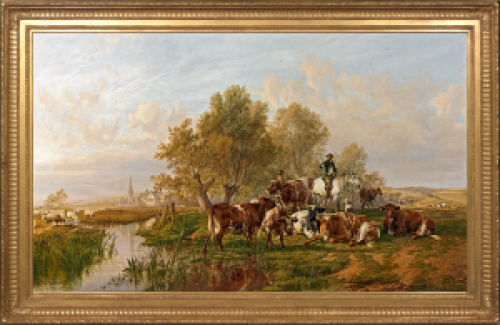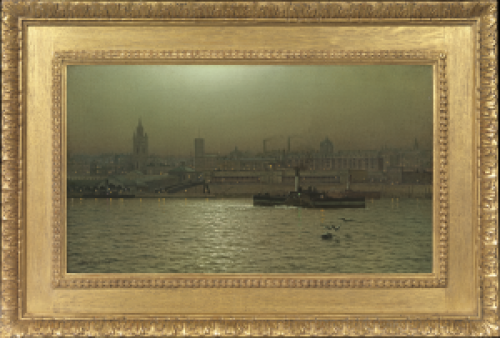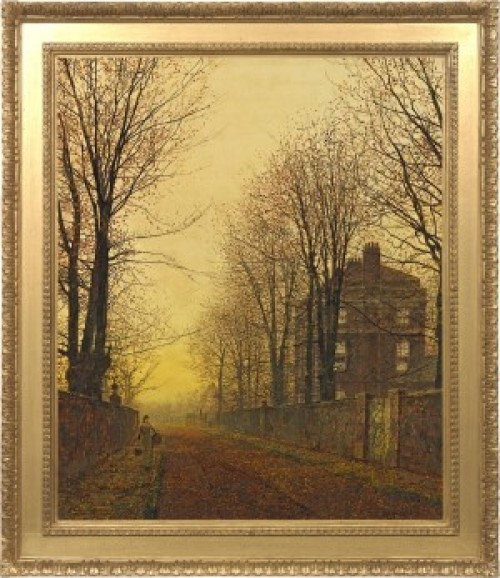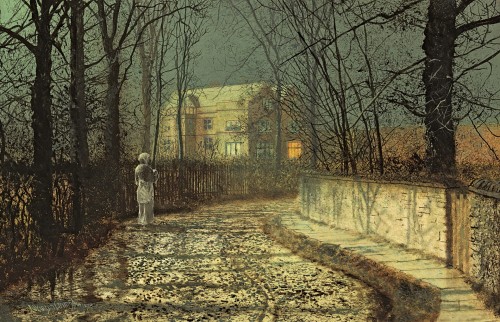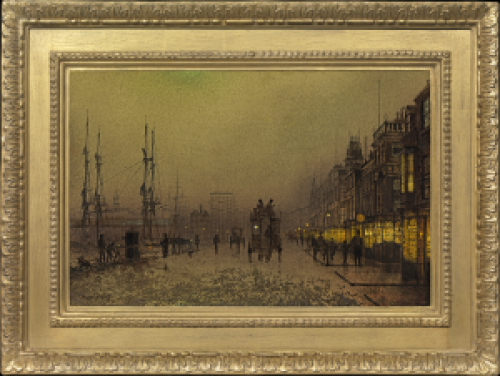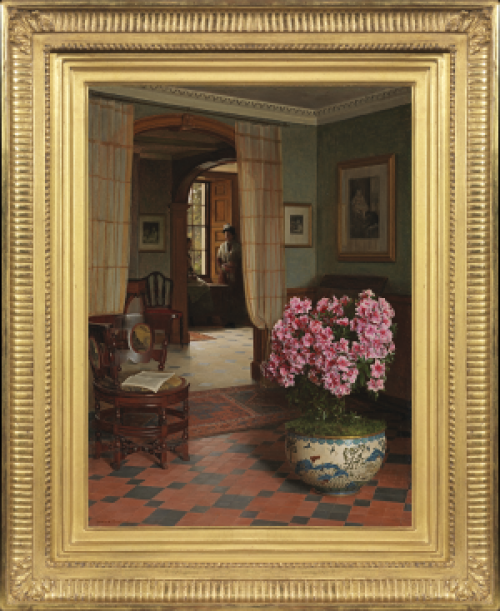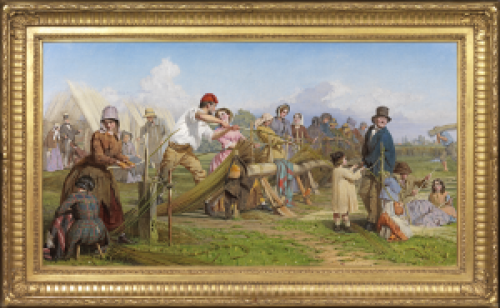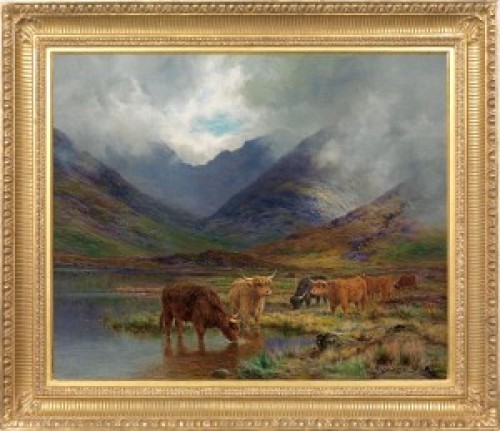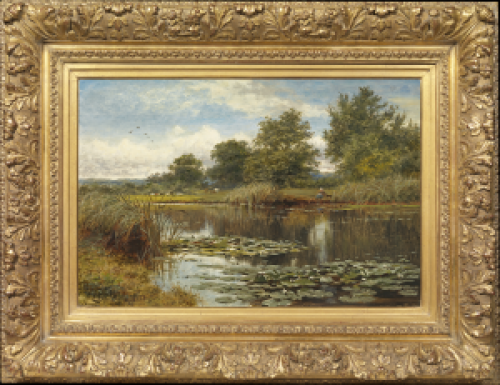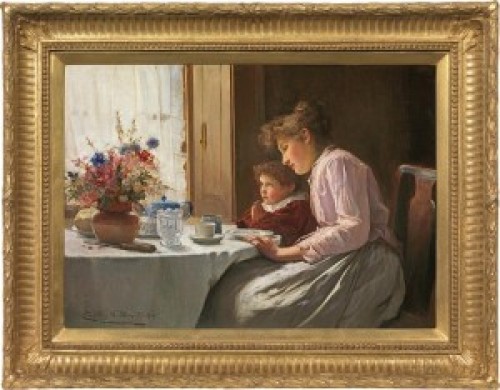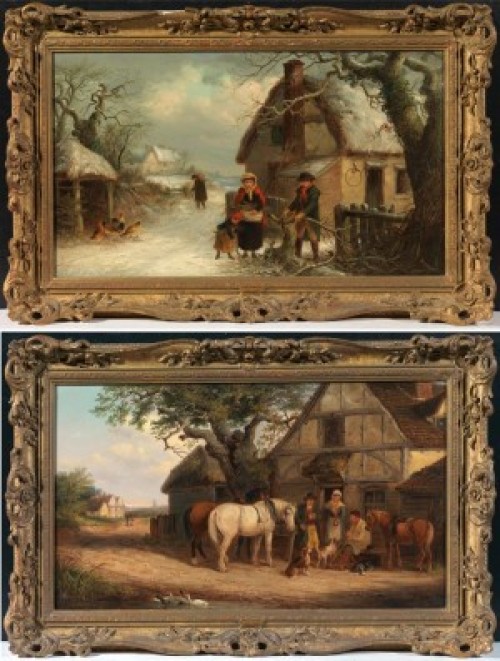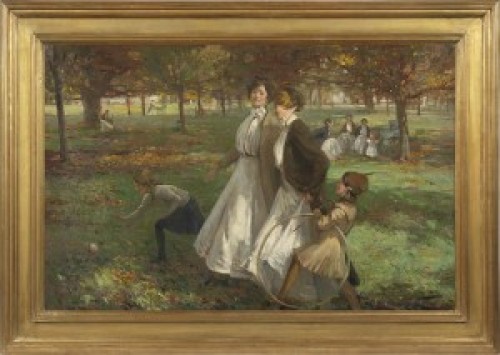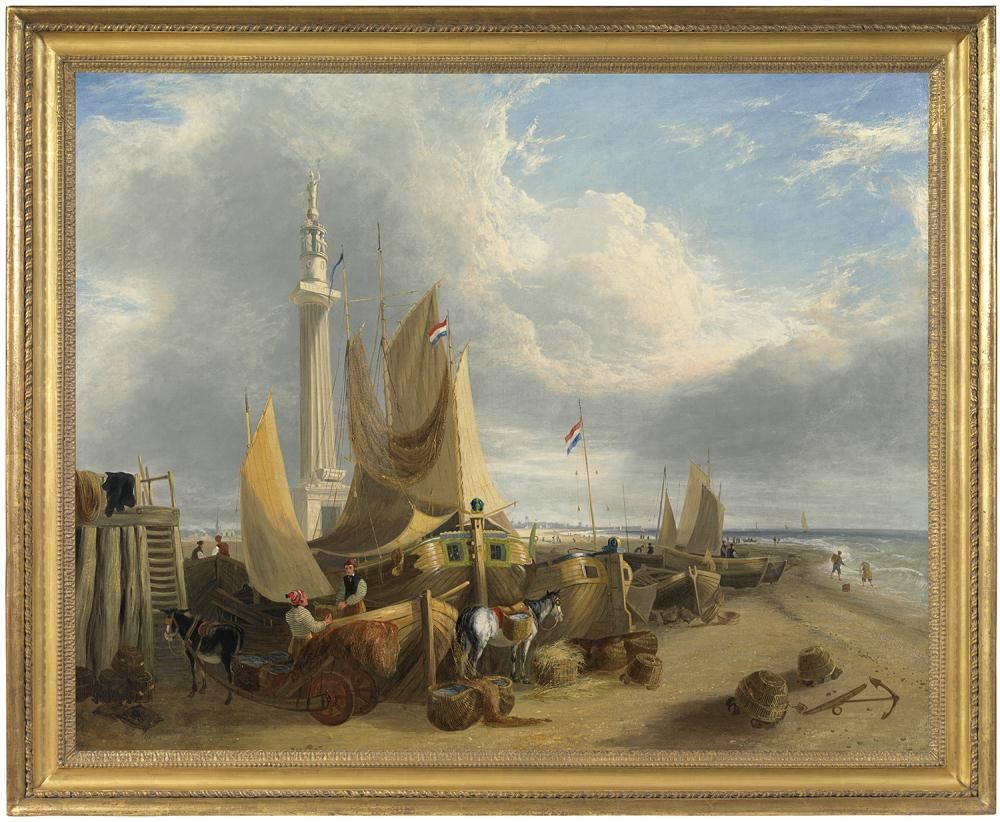GEORGE VINCENT
St John-at-Timberhill 1796 - c.1836 Norwich
Ref: BM 94
Fisherfolk and Dutch vessels on Yarmouth beach, beneath the Norfolk Nelson Monument.
Signed with monogram and dated lower left: GV / 1829
Oil on canvas: 40 x 50 in / 101.6 x 127 cm
Frame size: 48 x 58 in / 121.9 x 147.3 cm
Provenance:
Dalham Hall, Newmarket, Suffolk
Private collection, UK
‘I am a Norfolk man and glory in being so’, Admiral Nelson declared after landing at Yarmouth in 1800 as the Hero of the Nile. The Norfolk Nelson Monument, designed by William Wilkins and crowned by a figure of Britannia, was erected in 1819, twenty-four years before Nelson’s Column in Trafalgar Square. On the landward side an inscription reads: ‘This great man Norfolk boasts her own….in talents, manners and mind’.
George Vincent emphasizes the classical grandeur of the monument by bathing it in a shaft of light from a parting cloudscape. The dramatic, swift-moving coastal clouds, the crystalline clarity of his style and the sharp recession of the line of fishing boats all contribute to a sense of dynamism in this painting. The Dutch flags on the boats are a reminder of the long association between East Anglia and The Netherlands.
Vincent also used the Nelson Monument as a focus in Dutch fair on Yarmouth beach, Norfolk, 1821 (Great Yarmouth Museum). He made a number of paintings of the Yarmouth shoreline and its lively fish markets, including Fish auction, Yarmouth beach, 1828 (Norwich Castle Museum).
GEORGE VINCENT
St John-at-Timberhill 1796 - c.1836 Norwich
The son of a weaver and shawl manufacturer, George Vincent may well have embarked on his career as an artist through the encouragement of the Starks, a family whom his father knew in the dyeing trade. The Starks’ son James was training to be an artist. After completing his education at Norwich Grammar School, Vincent joined Stark as a pupil of John Crome (1768-1821). He first exhibited with the Norwich Society of Artists in 1812.
In January 1816, after the final defeat of Napoleon, Vincent travelled to France in the company of John Berney Crome, often known as ‘Moonlight Crome’ (1794-1842), and the surgeon Steele, who married Crome’s daughter. On his return, Vincent travelled throughout the south-east, painting views of Essex and Windsor. The friendship with James Stark remained very close and the two young artists lived next door to each other in Newman Street when they moved to London and began their studies at the British Institution Schools in Pall Mall. When Stark was forced to return to Norwich due to ill-health, Vincent embarked upon a tour of Scotland in 1819.
George Vincent returned to London, having attended the funeral of his friend and Master Crome in Norwich in 1821, gaining considerable patronage. In 1822 he married the daughter of Dr Cugnoni – whom he erroneously thought to be an heiress - and purchased a house in Camden Town somewhat beyond his means. In 1824, they moved to a smaller house and studio in Bedford Square. However, Vincent was never to learn to spend his money temperately and in December 1824 he ended up in the Third Gallery of the debtors’ prison in Fleet Street, from which he was discharged in February 1827. He was able to paint in the Fleet, but only small works. Works by Vincent were shown at the Society of British Artists in 1832, the year that he died.
The work of George Vincent in represented in the Norwich Castle Museum; the British Museum and the V&A, London; Nottingham Castle Museum and Art Gallery; Manchester City Art Gallery and the Fitzwilliam Museum, Cambridge.

